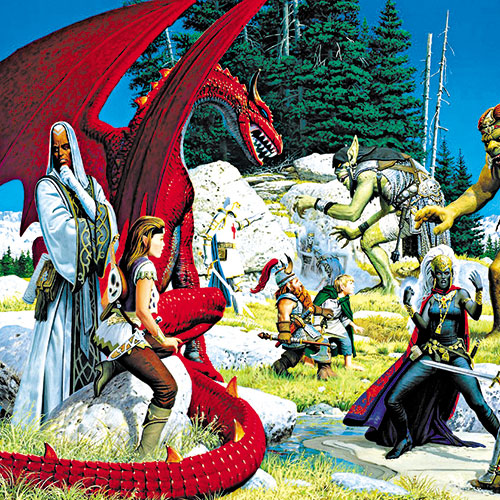This title turns 20 and lets players try to relive its past

Platform: PC
Genre: Massively multiplayer online role-playing game
Publisher/Developer: Daybreak Game Company
Rating: Teen
By Gieson Cacho | The Mercury News (TNS)
Memory lane is a path fraught with pitfalls, and it’s especially treacherous for video games. Technology moves so fast and players experience so much that memories color the past too fondly. Projects that looked bleeding edge decades ago look primitive now. Titles that were fun seem rather bland now.
Video games and our memories of them are trapped in a moment that can never be duplicated. For me, EverQuest is one of those titles. The massively multiplayer online game helped define the genre, and as a player who began playing near the start of launch, it was exhilarating to see a new category forming before my eyes.
“It started a whole bunch of stuff like, World of Warcraft,” said Alan VanCouvering, assistant lead designer.
Before Blizzard’s MMO dominated the genre, EverQuest laid the groundwork. It established an enormous world and class interdependence. Concepts such as tanking and pulling became part of the gaming lexicon. Even after some MMOs have come and again, the old stalwart has remained constant.
Now, Daybreak Game Company is marking EverQuest’s 20th anniversary with a series of events and the introduction of Progression Servers. These allow players to re-experience the MMO’s history from the beginning. Starting March 16 and continuing through the next few years, the company’s Selo and Mangler Progression Servers lets gamers check out the game from the start.
The idea behind the two servers is that players can jump in, play the game and watch it evolve over time. Depending on the server, an expansion unlocks at timed intervals. With the fast-paced Selo server, that happens every month. With the Mangler server, those new adventures and lands come online every 12 weeks. With 24 expansions, players have plenty of content to run through.
It’s a tempting service for longtime fans, but they have to keep in mind that the game won’t be exactly like the original first year when everything was fresh and new. The visuals haven’t aged well, and the game doesn’t have those modern day conveniences that players take for granted.
Players can gripe about those quality-of-life issues, but at the same time, it’s partly those problems that lent vanilla EverQuest its charm. Some of its onerous peculiarities are inherent to the nostalgia tied to the game. Players weren’t supposed to go through it solo. They had to uncover many of the zones and areas on their own or they could ask a friend. Enemies ramped up in difficulty and it forced players to group together and create strategies to be successful.
“It wasn’t supposed to be hard,” VanCouvering said. “It forced people to play together, become friends and it kept them together.”
When it comes to modern MMOs, he said he feels that the concept of discovery has become lost.
“You get told where to go,” VanCouvering said. “There’s no need to explore. There’s a path of least resistance that people follow.”
Although those parts of EverQuest are gone, they live on in other games. The idea of spawn camping allowed players to essentially hang out and created a scarcity for certain items. The introduction of instances ended that practice, but it was a natural way to meet strangers who would later become friends. That same camaraderie shows up in the raid system in Pokemon Go.
The difficulty and tension in dungeon crawling is comparable to what I feel while playing FromSoftware games like Dark Souls or Sekiro: Shadows Die Twice. EverQuest may not be as popular as it once was. Some may have even forgotten about it, but I still see elements of that original experience in nearly every game I’ve played. It’s a project that has had a lasting impression and will continue to do for more gamers as it enters its third decade.











